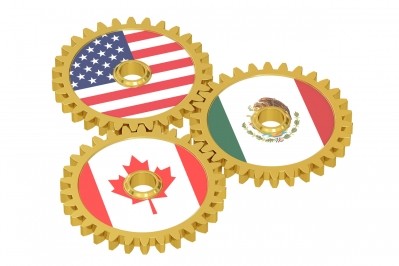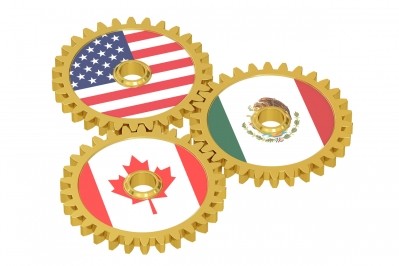US, Mexico trade rhetoric may influence feed grain market

Ongoing comments from Mexican officials have highlighted their intent to diversify trading partners for goods including feed grains, said Tom Sleight, president and CEO of the US Grains Council.
There has not been an erosion of that market at this point, he said. “'[We have] tremendous competitive advantage against other suppliers, and we hope to maintain that – but we are disappointed in the rhetoric,” he added.
“They know they have a reliable partner [in the US] – the logistics are good for truck, rail and in terms of shipping,” he said. “They know they can get what they need, when they need it and they don’t have to have a lot of big storage facilities – the supply lines have been well developed.”
Mexico is the top market for US corn and barley, and the second largest buyer of DDGs and sorghum, according to the US Grains Council. It purchased 13.3m metric tons of corn in 2015/16.
“We’re in a holding pattern at the moment waiting for the notice to go to Congress [asking for the] formal renegotiation of the North American Free Trade Agreement (NAFTA),” said Sleight. “But, we’re still engaging with Mexico and making sure that they know we care.”
However, that does not mean there are not places where NAFTA could not be improved, he said.
If trade with Mexico were to be disrupted, then additional efforts would made to bump up trade with other regions, he said. The council is always looking to expand global markets for US grains, he added.
“If we lose market share, we have to try and pick it up somewhere else,” he said. “Our job is to try and stay involved all around the world.”
Soybean meal and oil meal trade
In addition to corn, the US is the primary supplier of oilseeds to Mexico, said the USDA in an attaché’s report from the Foreign Agricultural Service (FAS). In marketing year 2017/18, the amount of oilseeds imported by the Central American country is expected to increase 4.3% to about 6.2m metric tons.
The amount of oil meal imports into Mexico is also predicted to increase, rising to about 2.45m metric tons in marketing year 2017/18, said the department. The US is the primary exporter of soybean meal to Mexico.
The growth is based on demand from the livestock sector in addition to reduced domestic oilseed production, the department said. “The US is expected to continue to be the principal supplier of oilseeds (mainly soybeans),” it added.
“However, since oilseeds import decisions continue to be based on price and the availability of credit, Mexican importers and feed manufacturers might be willing to switch to other suppliers if the oilseeds prices from other origins are affordable,” the department said. “Also, private sources pointed out that as Mexico becomes a more attractive importer, some other countries that produce soybeans (i.e. Brazil and Argentina), have shown interest in exporting to Mexico.”
The Mexican government has said there is a strategic objective to seek a larger range of import suppliers, the department said.
“In the longer term, this could mean that Mexico would not rely only on US soybean imports, as is currently the case,” said the USDA. “However, given that there have not been any changes to policy or economic factors, it is expected that over the mid-term at least, Mexico will remain a substantial importer of soybean from the US.”












